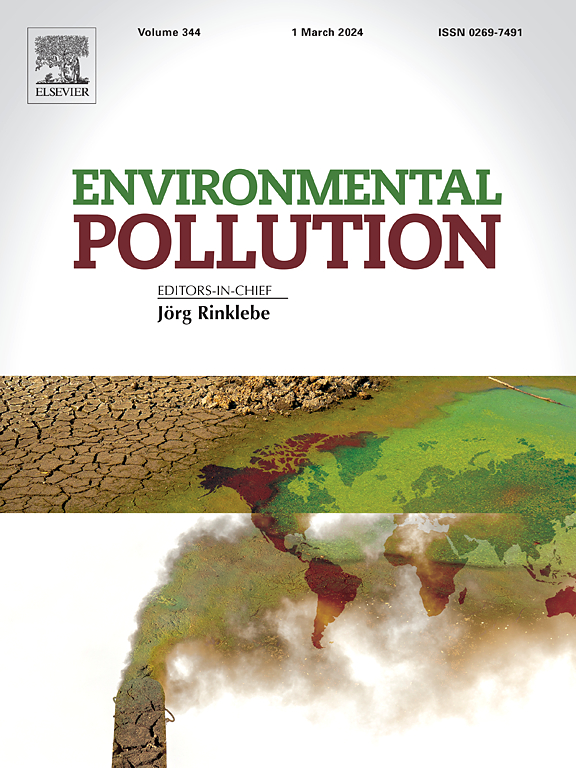Association of thallium exposure in early life with gut microbiota in neonates
IF 7.6
2区 环境科学与生态学
Q1 ENVIRONMENTAL SCIENCES
引用次数: 0
Abstract
Previous research has found a correlation between heavy metals and gut microbiota in humans. However, there are few population-based studies examining the impact of early life thallium (Tl) exposure on neonatal microbiome. 342 newborns were recruited from Hunan Children's Hospital and subsequently divided into three groups (low, medium, and high) based on the 25th and 75th percentiles of serum Tl concentration. Additionally, the relationship between Tl and gut microbiota was analyzed in subgroups (preterm or full-term neonates). The association between Tl and gut microbiota in neonates was analyzed by Redundancy analysis, Spearman correlation analysis and MaAsLin2. The detection rate of Tl in neonates was 100%, with the median concentration of 0.021 μg/L. In all neonates, we found significant differences in the Chao1 and ACE indices of α-diversity in gut microbiota, and the relative abundances of Bacteroidota and Bacteroidetes were significantly different among groups (p < 0.05). Following the covariate adjustment, Tl was negatively correlated with Gemmatimonadota (Coef = 0.265, p < 0.05) in preterm neonates. In full-term neonates, Tl exhibited a positive correlation with the relative abundance of Robinsoniella (Coef = 0.563, p = 0.009) and a negative correlation with that of Pseudomonas (Coef = - 0.592, p = 0.012). Tryptophan and renin-angiotensin system pathways might exert important roles in Tl exposure. This study indicated that Tl exposure was associated with changes in α-diversity and the composition of gut microbiota in neonates, with Gemmatimonadota being predominantly affected in preterm neonates and Robinsoniella and Pseudomonas in full-term neonates.

求助全文
约1分钟内获得全文
求助全文
来源期刊

Environmental Pollution
环境科学-环境科学
CiteScore
16.00
自引率
6.70%
发文量
2082
审稿时长
2.9 months
期刊介绍:
Environmental Pollution is an international peer-reviewed journal that publishes high-quality research papers and review articles covering all aspects of environmental pollution and its impacts on ecosystems and human health.
Subject areas include, but are not limited to:
• Sources and occurrences of pollutants that are clearly defined and measured in environmental compartments, food and food-related items, and human bodies;
• Interlinks between contaminant exposure and biological, ecological, and human health effects, including those of climate change;
• Contaminants of emerging concerns (including but not limited to antibiotic resistant microorganisms or genes, microplastics/nanoplastics, electronic wastes, light, and noise) and/or their biological, ecological, or human health effects;
• Laboratory and field studies on the remediation/mitigation of environmental pollution via new techniques and with clear links to biological, ecological, or human health effects;
• Modeling of pollution processes, patterns, or trends that is of clear environmental and/or human health interest;
• New techniques that measure and examine environmental occurrences, transport, behavior, and effects of pollutants within the environment or the laboratory, provided that they can be clearly used to address problems within regional or global environmental compartments.
 求助内容:
求助内容: 应助结果提醒方式:
应助结果提醒方式:


